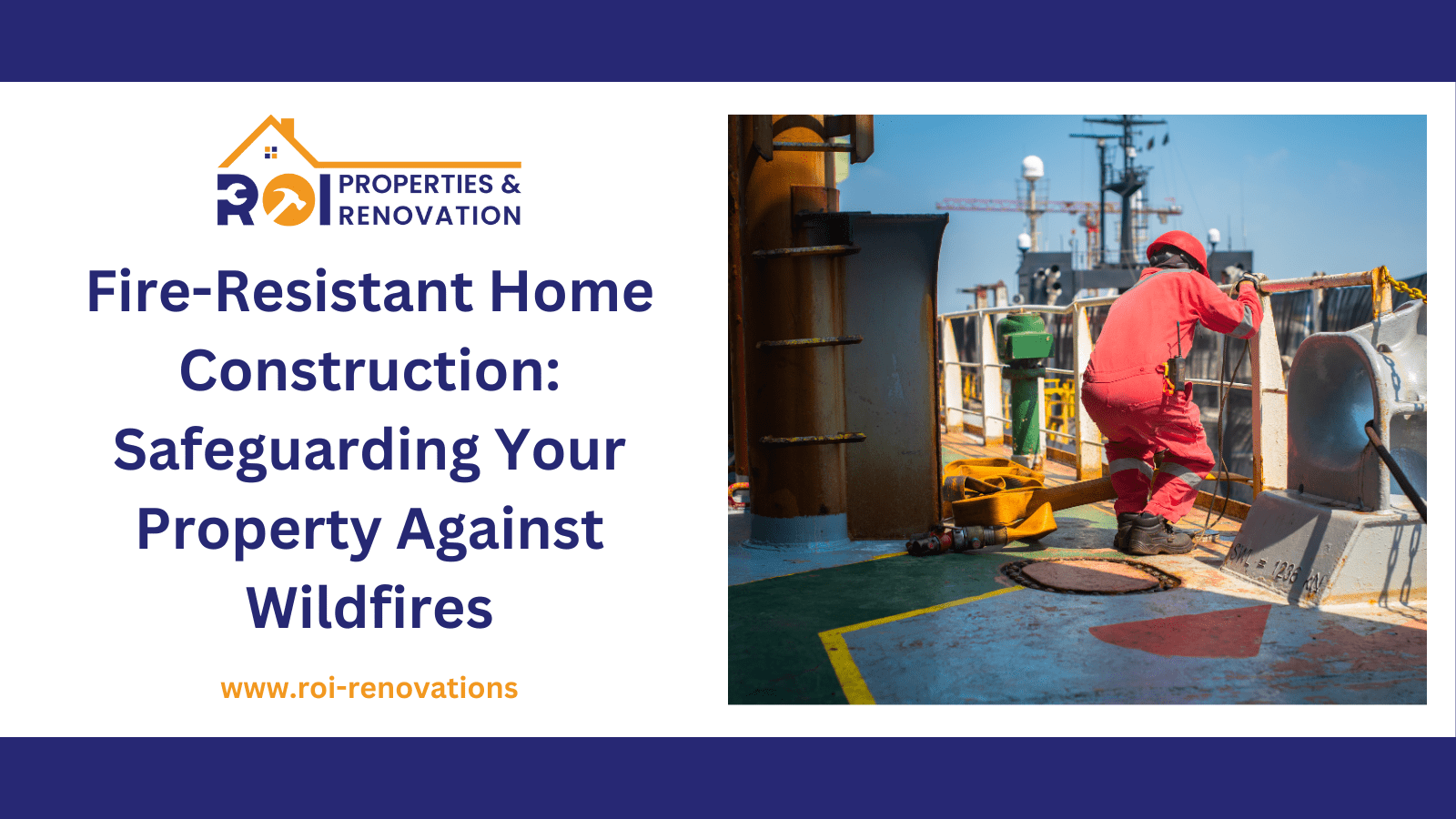Introduction to Fire-Resistant Home Construction
Today, we will discuss “Fire-Resistant Home Construction.” In recent years, the increasing frequency and intensity of wildfires have underscored the importance of fire-resistant home construction. Protecting your property from the devastating effects of wildfires requires careful planning and implementation of fire-resistant building practices. In this blog post, we’ll delve into the key considerations and strategies for constructing a fire-resistant home that can withstand the challenges posed by wildfires.
Understanding the Threat
1. Wildfire Risk Assessment:
Conduct a thorough assessment of the wildfire risk in your area. Utilize local fire department resources and online tools to understand the historical wildfire patterns and potential threats to your property.
2. Building in Fire-Prone Zones:
If you’re in an area prone to wildfires, explore the specific building codes and regulations applicable to fire-prone zones. Complying with these regulations is the first step in creating a fire-resistant home.
Essential Components of Fire-Resistant Construction
3. Roofing Materials:
Investigate fire-resistant roofing materials such as metal, asphalt shingles, or clay tiles. Evaluate their fire resistance ratings and choose materials that offer maximum protection against ember intrusion.
4. Siding and Exterior Finishes:
Opt for fire-resistant siding materials like fiber cement, stucco, or metal. These materials can help prevent the spread of flames and resist ignition from radiant heat.
5. Windows and Doors:
Select windows and doors with fire-resistant features, such as tempered glass and non-combustible frames. Ensure proper sealing to prevent ember entry.
6. Ventilation Systems:
Install ember-resistant vents and screens to safeguard against the infiltration of embers into the attic or crawl spaces.
Designing a Defensible Space
7. Landscaping Strategies:
Implement fire-smart landscaping by creating defensible zones around your property. This involves maintaining a safe distance between vegetation and your home, as well as choosing fire-resistant plants.
8. Clearing Debris:
Regularly clear dead vegetation, leaves, and other combustible debris from your property. Create a buffer zone by keeping flammable materials away from your home.
9. Water Supply and Access:
Ensure there’s adequate water supply for firefighting efforts. Create easy access for fire trucks and emergency personnel to reach your property.
Maintaining Fire-Resistant Features
10. Regular Inspections:
Conduct regular inspections to ensure that fire-resistant features are in good condition. Replace any damaged or worn materials promptly.
11. Homeowner Education:
Educate yourself and your family about fire safety practices. Have an emergency evacuation plan in place and rehearse it regularly.
Conclusion to Home Construction Financing in the USA
Constructing a fire-resistant home is not just about meeting building codes; it’s about creating a safe haven for you and your loved ones. By implementing the strategies outlined in this guide, you can significantly reduce the risk of wildfire damage to your property. Stay informed, be proactive, and invest in fire-resistant home construction to protect what matters most.
You can read all our blogs by clicking here.







